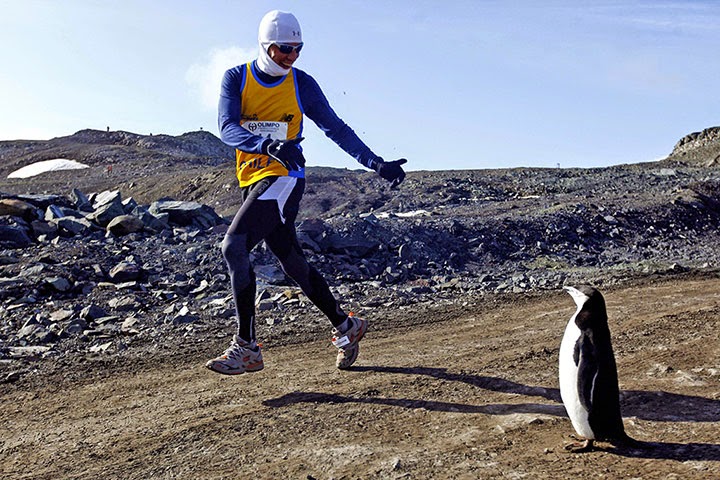According Garrett Hardin (1968), each
herdsman wants to keep as many cattle as possible. The rational herdsman decides
that adding additional animal to his herd will increase his utility. But each
herdsman shares the commons, so if each herdsman decides to keep increasing
cattle to the commons, the end result will be the depletion and ruin of the
commons.
The commons here can be compared to Antarctica.
Antarctica is an unregulated area of land which yields benefits to tourist
companies who want to keep increasing tourist numbers as each additional tourist
yields these companies higher utility (i.e. higher profits). The main
assumption that Hardin uses is that the commons is unregulated. In this
globalised world, it is rare, in my view, to find an industry that is unregulated
– especially when it comes to nature and the environment. What matters in this
debate though, is not whether there are regulations but how effective
the regulations are.
One solution to the negative impacts explained last week
is to reduce tourist numbers. This could potentially reduce the introduction of
invasive species and the impact on penguin habitats. But as is obvious in my
post from 27 October, tourist
numbers are rising and I think this solution is unlikely. Companies running expeditions
such as Poseidon Expeditions, Quark Expeditions, Chimu Adventures are profit
maximising companies. This means they want to make as much money as possible
and so reducing passenger numbers is undesirable because this reduces revenues
and profits. Nevertheless, the Antarctic Treaty endeavours to do just this. In
recognition of greater human visits to Antarctica, the Antarctic Treaty has
been set up to prevent an environmental catastrophe.
It was formed in 1959 and came into force in 1961 to
govern human activities. It comprises of 46 countries, of which 28 have
advisory status (i.e. power to make decisions). The treaty believes that the
following provisions are the most important (Secretariat of the Antarctic Treaty, n/d):
1. Antarctica shall be used for peaceful purposes only
(Art. I).
2. Freedom of scientific investigation in Antarctica and
cooperation (Art. II).
3. Scientific observations and results from Antarctica
shall be exchanged and made freely available (Art. III).
It claims these are the most important, however on
reading these, my first impression is that there is no mention of the
environmental concerns. Research seems to be the main agenda. As you will read
later in my blog, research centres can also have negative impacts on the
continent. So this is one flaw that I spotted when I began researching the
treaty.
The Rules of the Treaty are known as the Antarctic Treaty
System, consisting of three international agreements:
1. Convention for the Conservation of Antarctic Seals
(1972)
Aims to reduce commercial exploitation of seals.
2. Convention on the Conservation of Antarctic Marine
Living Resources (1980)
Aims to conserve and manage marine living resources in
Antarctic. The following measures, among others, are being taken (Fabra and Gascon, 2008):
a. Develop a management regime for krill that takes into
account the impact of fishing on dependent species
b. Establish a monitoring program
c. Develop fisheries management policies
3. Protocol on Environmental Protection to the Antarctic
Treaty/ Montreal Protocol (1991)
Protocol on
Environmental Protection to the Antarctic Treaty/ Montreal Protocol
The relevant agreement that relates to tourism is number 3: Protocol
on Environmental Protection to the Antarctic Treaty. This protocol was
established in 1991 once it was recognised that the number of tourists were
increasing. This treaty is broken up into six annexes including:
Of the Annexes, number three and number six mention
tourism. There were previously no restrictions or regulations on tourism, but
this changed in 2009 when an agreement was made among member countries to limit
tourism by reducing the size of cruise ships, capping the number of passengers
that land in Antarctica to 500 and capping passengers on the shore at any given
time to 100 (BBC, 2009).
This agreement was discussed in the Antarctic Treaty Consultative Meeting in
Baltimore. Box 1 displays the general principles that came out of these
discussions.
So hopefully from this post I have illustrates that action is
indeed being taken to help reduce the human impacts on Antarctica. The
international community is not ignoring what is happening to wildlife in
Antarctica and it’s important to acknowledge this. International treaties help
regulate and reduce negative environmental issues. In particular, Annex 3 which
relates to waste management is a useful starting point to improve the
environment.
This is where I’m going to end today. Because regulation aims to reduce the human impact, this is one point to positive impacts, so the updated score for negative impacts vs natural/positive impacts is 3-2. These treaties
signify that we acknowledge and want to reduce our wrong doings. But are these
really effective? Keep a look out for the next post where I will determine whether its one more point to negative impacts or not.
















